Designer: Willie Campbell (1898), Donald Ross (1914, Redesign), Ron Forse (2008, Restoration), Andrew Green (2022, Renovation)
Location: Rumford, Rhode Island
History: Originally founded in 1898, Wannamoisett began as a 9-hole Willie Campbell course and received immediate acclaim. In 1914, Wannamoisett commissioned Donald Ross to redesign the course. The resultant course was even better and Ross remarked, “This is the best layout I have ever made. A fine course on 100 acres. No congestion, fine variety, and excellent golf.” A century later, and Ross’s words still ring true. In 1931, Wannamoisett hosted the PGA Championship won by Tom Creavy. In 1962, the first Northeast Amateur was played at Wannamoisett. One of the four “majors” of amateur golf, this annual tournament has been played at Wannamoisett ever since and features winners like Dustin Johnson (2007), Luke Donald (2000, 2001), Notah Begay III (1995), David Duval (1992), and Ben Crenshaw (1973). Tiger Woods also played in the event twice before turning pro. PGA Tour Pro Luke Guthrie holds the course record with a 61. In 2016, the Junior PGA Championship was played at Wannamoisett. The Club has earned several accolades, including:
- #163 Best Course in America – Golf Digest (2023)
- #58 Best Classic Course in America – Golfweek (2023)
- #3 Best Course in Rhode Island – Golf Digest (2023)
- #2 Best Course in Rhode Island – Golf Magazine (2023)
- #2 Best Course in Rhode Island – Top100golfcourse.com (2020)
- #2 Best Private Course in Rhode Island – Golfweek (2023)
Conditions: 10/10, There isn’t a blade of grass out of place at Wannamoisett and that’s a testament to the amazing job Mark Daniels does as greenskeeper. The teeboxes at Wannamoisett are better than greens at most courses, and the fairways are meticulously maintained. The bluegrass rough is notoriously thick and sometimes necessitates a lay-up for even the best players. The most impressive feature about Wannamoisett are its greens, which Ben Crenshaw called his favorite in the world. These poa annua greens are perfectly smooth, and infamously fast, routinely running at a 13-14 on the Stimpmeter.
Value: N/A, This is a private course.
Scorecard:
Tee Par Yardage Rating Slope
Black 69 6732 73.5 130
Blue 69 6417 71.9 127
White 69 6085 70.2 126
Green 73 5602 72.7 128
Hole Descriptions: Built on only 97 acres (a feat nearly impossible by today’s design standards), this charming par 69 is an architectural masterpiece. Donald Ross seamlessly designed 18 unique holes with strategic bunkering and difficult green complexes that continue to befuddle the best amateurs in the world. Wannamoisett is the perfect example of a course that relies on good architecture and not mindless length to remain challenging in the modern era.
The first four holes at Wannamoisett are often described as the hardest opening stretch in Rhode Island. Getting through this stretch at +1 or +2 means you are likely in for a very good round. The 1st hole is an intimidating 420 yard par 4 that runs slightly uphill. The patio is directly behind this teebox, and you will undoubtedly be nervous with so many eyes on you on your first swing of the day. There’s a pond between the teebox and fairway that only really catches topped drives. Two bunkers line the right fairway about 200 yards from the tee while another lines the left side at 240 yards. All of these bunkers contain tall lips and often require a lay-up. This green is fairly receptive to balls that runners, but features several slopes that leave some daunting putts. Two tiny bunkers guard the front two sides of the green while a grass bunker full of thick rough lines behind.
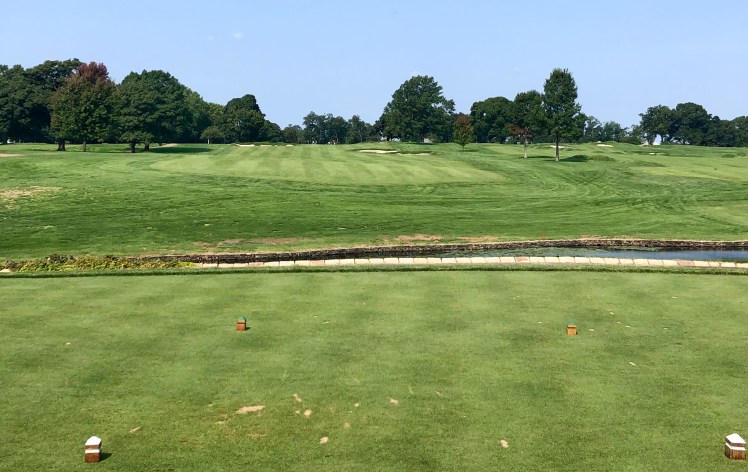

At 460 yards (and over 500 yards from the Black tees), the beastly number 1 handicap 2nd hole plays as a par 5 for most members. This fairway is rather generous with tall trees lining the fairway on both sides. A plateau in the fairway at about 230 yards serves as a decision-maker and drives that fall short of this plateau will have virtually no shot at reaching the green in two. After the trees end on the right at about 270 yards, the right fairway is guarded by four long bunkers. At the same time on the left side, OB in the form of a parking lot looms all the way to the green. The layup for this hole must be short of a small creek, which runs about 60 yards short of this green and collects more balls than it should. This large green runs hard back-to-front and is flanked by 3 bunkers on both sides. A par here truly feels like a birdie.
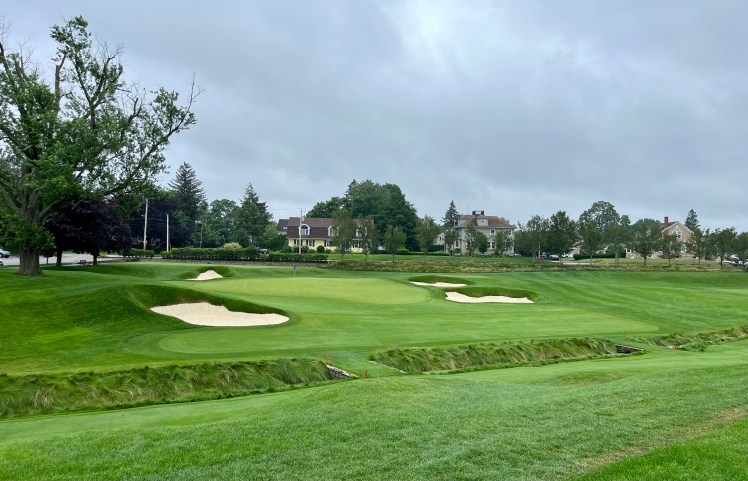


The only real relief on the first 4 holes is the short par 3 3rd that plays only 131 yards. This hole is a perfect example of a good short par 3 in that good shots will be rewarded with makable birdie putts, but bad shots will require heroic shots to get up-and-down. This hole requires a carry to an elevated green which is surrounded by a moat of jagged bunker left and short. Fescue lies behind this green, while the right side is guarded by the creek and tightly mown area. While birdies can be had, this green is again sloped back-to-front and can be very speedy. Routinely ranking as one of the top holes in the country, The Donald Ross Society chose this green to be its emblem.

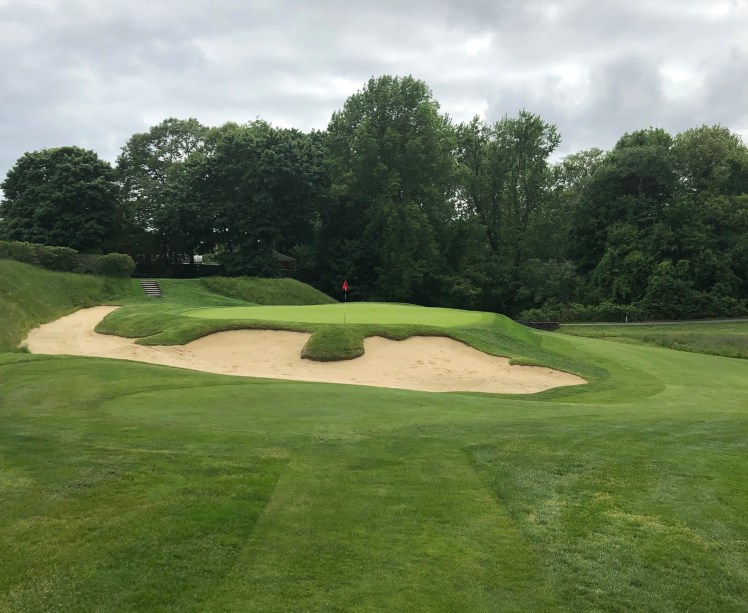
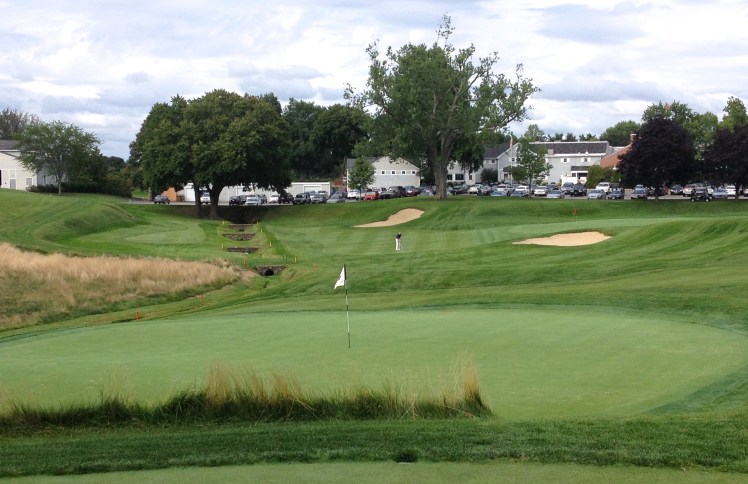
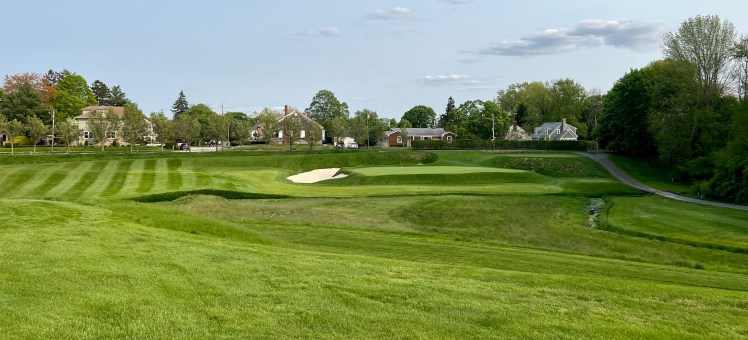
The 429 yard 4th is no longer the number 1 handicap hole but is still a very challenging hole. From an elevated teebox, this teeshot requires a carry of 125 yards over a valley to reach the fairway. This hole then turns sharply left and requires a draw but overzealous hooks will go OB. Four bunkers line the right side of this fairway, while a narrow 50 yard-long bunker lines the left side. Once you get past the bunkers on the right, tall trees run to the green and pretty much require a punch-out if you drive it underneath them. The uphill approach to this large green is fairly straightforward, but a myriad of tiers on this back-to-front sloped green make it prone to three-putts.

Judging by the scorecard, shorter holes 5-7 should provide relief from the difficult start, and tee-to-green they do. However, this is the hardest three hole stretch of green complexes in the state. The 5th hole is only 363 yards, and plays even shorter if you cut this dogleg right’s corner. Three large church-pew bunkers line the right side of the fairway and overzealous cuts will likely find these. Drives through the fairway will be stuck in the thick left rough and won’t be able to spin their approach shots. This approach is one of the most difficult on the course, even though most players only have a short iron in hand. This green is elevated, guarded by bunkers on three sides, and features a vicious false front collects anything with backspin. Going long is even more deadly as this often leads to a ping-pong phenomenon. A heavy back-to-front and right-to-left slope make the functional size of this green half of its actual size.
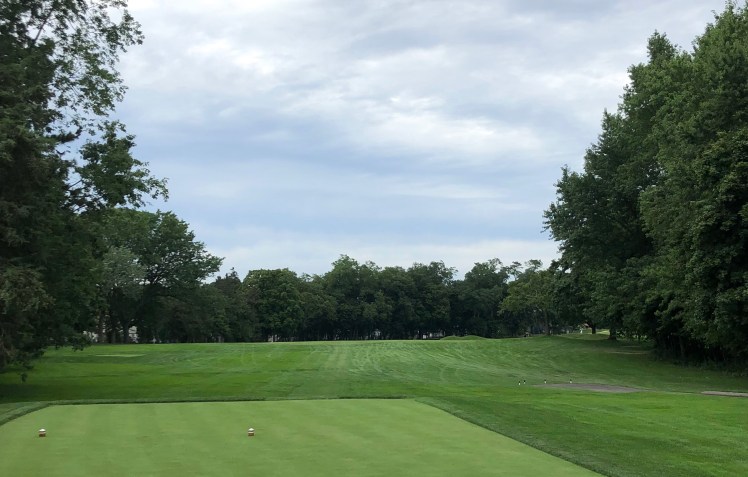

At 415 yards, the slight dogleg left 6th hole calls for a draw off this tee. Hooks will be lost OB left while a series of bunkers and trees lines the right. The most difficult aspect of this hole is the green, which is severely underrated as far as difficulty goes. It contains several pinnable plateaus that make speed miserable to judge.
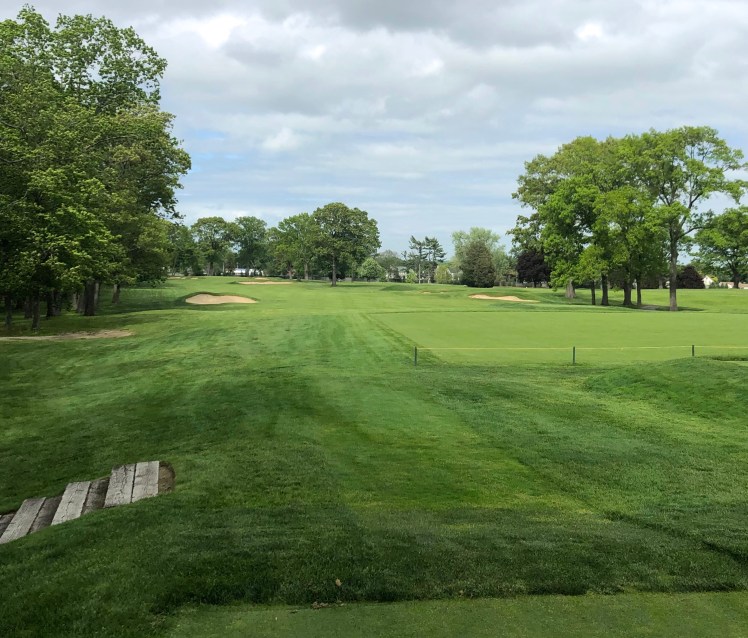

At 335 yards, the straightaway 7th hole provides the best chance at birdie of any par 4 on the difficult front side. Accuracy will be rewarded here, as any wayward drives on either side of this fairway will be most likely be blocked out by trees or bunkered. At about 250 yards, this fairway slopes hard left-to-right and most good drives will trickle down into a collection area, leaving an awkward uphill approach. Like the 5th, the 7th green also contains a brutal false front and runs hard back-to-front with a steep embankment left. There’s a deep bunker long right of this green that is almost impossible to get up-and-down from. One year when caddying in the Northeast Amateur, my player (now Pro) made a 9 on this hole from 120 yards out in the middle of the fairway.

The 8th hole is a beautiful downhill par 3 that plays 179 yards. Three bunkers guard short of this green while a long slender one guards the right. Balls that travel long left (common occurrence here) will find a thick grass bunker. In general, this tricky-to-read green runs back-to-front with two tiers running left-to-right. As a tribute to Donald Ross, a replica of this hole was selected to be part of Boyne Highlands Resort, a course that features 18 Ross holes from his best courses.

Although holes 5-8 can be had, the number 3 handicap 9th hole is a return to the difficulty of the starting holes. At 435 yards, this hole proves very difficult, especially for shorter hitters. While the fairway is fairly generous, bunkers and thick rough line both sides of this long par 4. This fairway ends at about 320 yards and gives way to a pond golfers will need to carry to reach this elevated green. Two bunkers guard the left side of this back-to-front sloped green, while another infamous false front collects balls that couldn’t quite reach the green in two.


All in all, the front 9 at Wannamoisett is one of the most difficult nines anywhere with very few birdie holes and bogey avoidance requiring near perfection. In contrast, the back 9 is much more scoreable and even features the lone par 5. The 10th hole is a complicated 403 yard par 4 that features twelve bunkers. Three line the right fairway at about 210 yards, while six line the left along the length of the fairway. For longer hitters, the most nefarious bunker is a crossbunker in the center of the fairway at 285 yards. This approach is a rare blind one from Ross but the the golfer is rewarded with the largest, flattest green on the course. As a result, this flag is the tallest on the course, and often all you can see over a plateau.
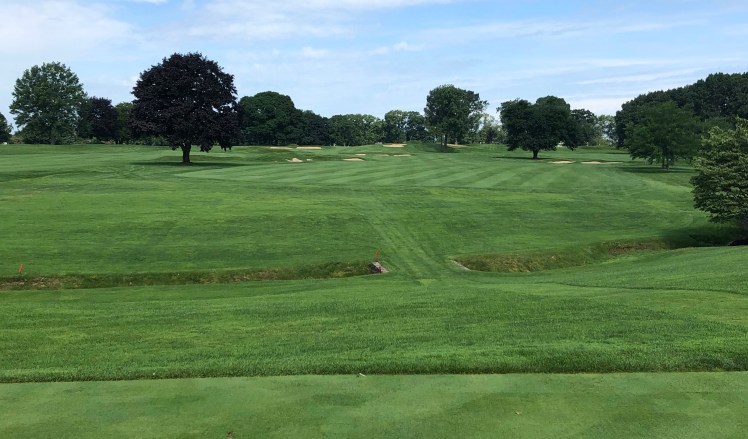
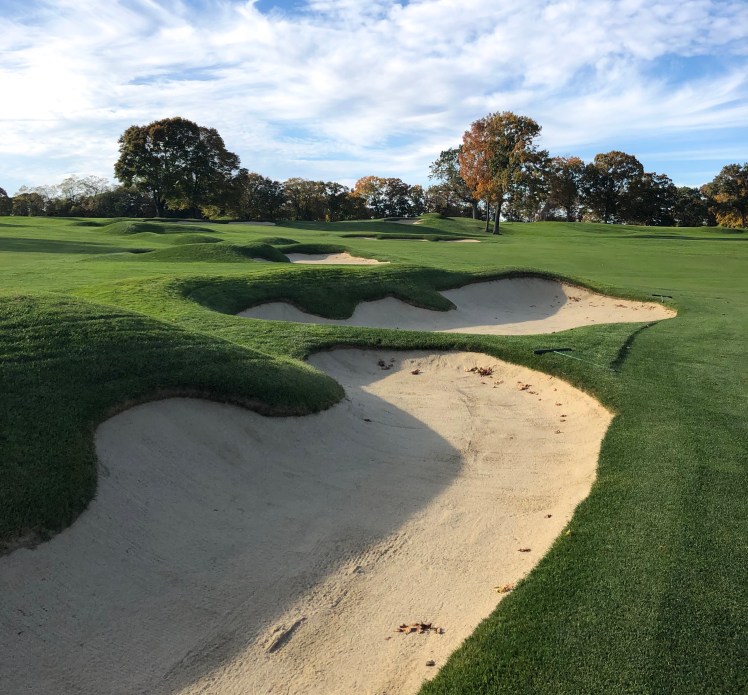


While there are no bad holes at Wannamoisett, it’s hard to argue that the par 4 11th isn’t the most bland. At 384 yards, this hole is straightforward with a wide fairway. Trees and bunkers line the fairway starting around the landing areas of drives but anything straight will leave just a short iron into a large green. The most difficult aspect of this hole is the green itself, which features three plateaus and runs hard back-to-front with a crossbunker just short.
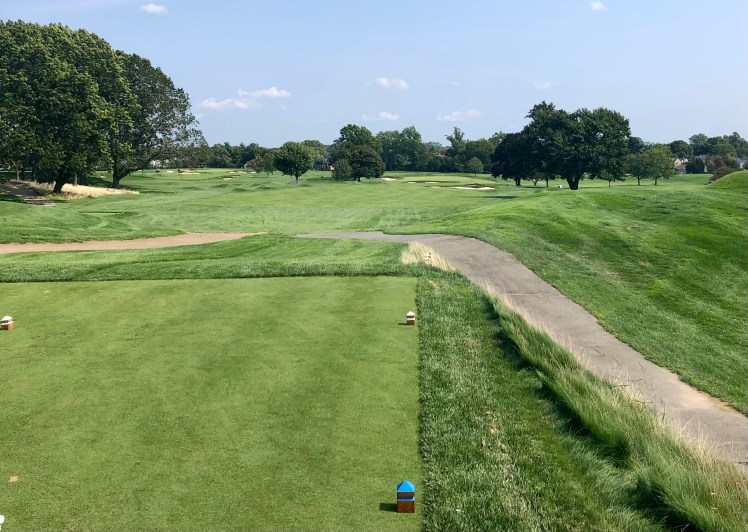

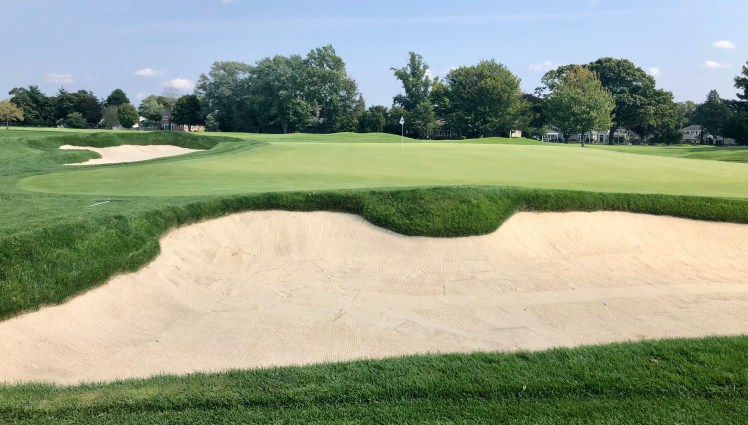
The 12th hole is one of my favorites at Wannamoisett and one of the most unique par threes around. At 195 yards, this hole runs straight uphill and requires a wood for many golfers. This green is a punchbowl and funnels everything to the center, yielding only a few pin options. Three tiny bunkers line the left while a huge bunker nicknamed the “Sahara” lines the right side for about 50 yards. Needless to say, you want to avoid this bunker at all costs.
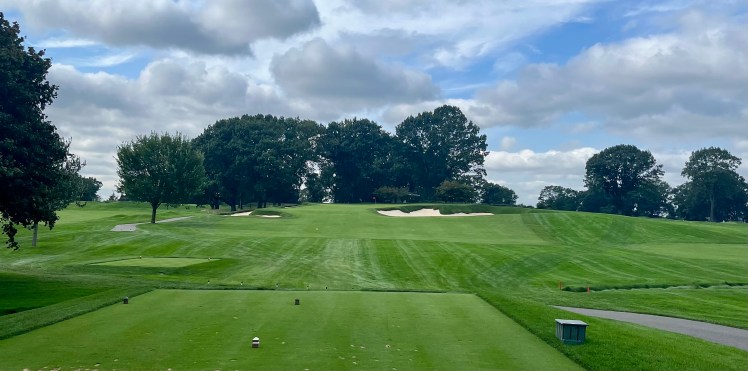

At only 369 yards, the downhill par 4 13th is another birdie hole if you can find this tighter fairway. However, those that miss the fairway here will be in real trouble. A thick forest of trees nicknamed the “Enchanted Forest” lines the left side of this fairway and requires a lay-up while two bunkers and sporadic tall trees line the right. This back-to-front sloped green also features two plateaus and is well-bunkered right and short left. For some reason, I find this to be the fastest green on the course.
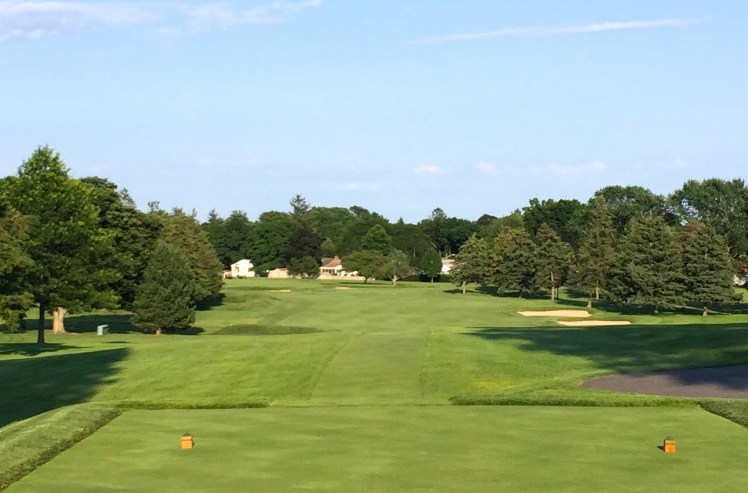
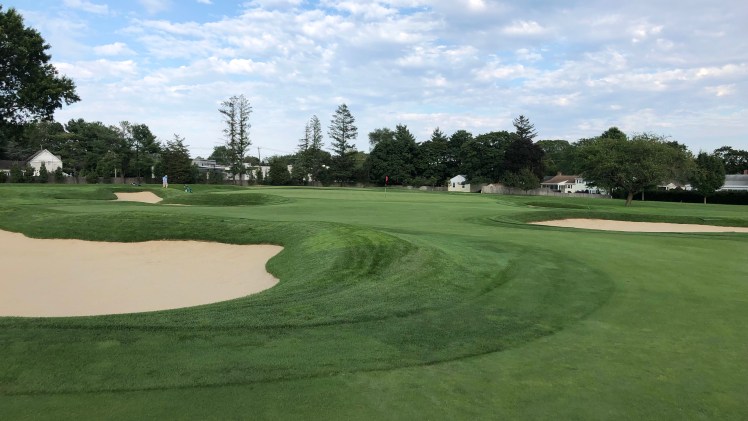
The tricky 350 yard par 4 14th is Ross’ excellent rendition of a Cape hole. This hole is a sharp dogleg right with a large pond guarding the right side the entire way to the green. Bold golfers will attempt to cut the corner with driver but the further right you go, the farther you will have to carry it to avoid the hazard. Golfers that decide to play it safe with hybrid or iron will contend with a large bunker at the elbow of the dogleg and be left an awkward angle into an angled green. This green is quite difficult with numerous ridges, and is surrounded left, right, and long by a moat-like narrow bunker. Wannamoisett has long been criticized for lacking a short par 4, but recent tree removal under Andrew Green’s guidance has opened up this green to longer hitters and made this a stronger hole both visually and strategically. Another interesting feature to this hole is an island in the pond that’s been known to collect balls and sometimes require the golfer to turn into a swimmer during tournament play. I personally would love to see an island green built on this island to be used sparingly to spice up the hole, but this is certainly not in line with Ross’ design philosophy.

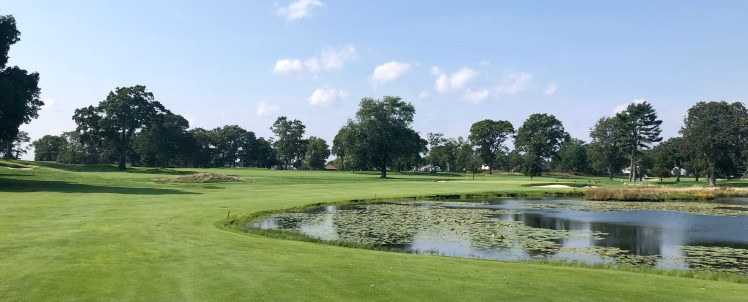
Despite being the 18th handicap hole, I find the 180 yard 15th hole to be the most difficult of the par threes at Wannamoisett. This uphill one-shotter isn’t the longest hole, but its green is much less receptive than the 12th. This green is well-guarded by bunkers on either side and features a Redan-like right-to-left slope.


At 426 yards, the beautiful par 4 16th is the number 2 handicap hole but I don’t feel it’s the hardest hole on the back 9. This slight dogleg left’s teeshot is framed by tall trees on both sides and calls for a slight draw to have the best approach. Most golfers will have a long iron or hybrid into this large green which slopes hard back left-to-front right and is defended by bunkers short and right.

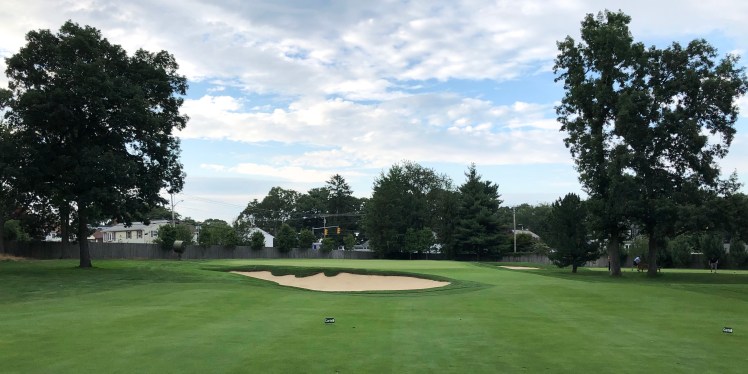
You have to wait until the penultimate hole to reach the lone par 5 at Wannamoisett, the 530 yard 17th. This long, straightaway three-shotter runs along Pawtucket Avenue and balls hit left the entire length of the hole will find this road. The right rough is also brutal, but many golfers end up here out of fear of going OB. The 14th pond lies farther to the right and shouldn’t really be in play, but I’d be lying if I haven’t been there before. While this hole is theoretically reachable in two, the green is well-protected by bunkers short and requires a near perfect shot to hold the putting surface. The lay-up is also challenging and should be down the right side to avoid two large cross bunkers on the left.
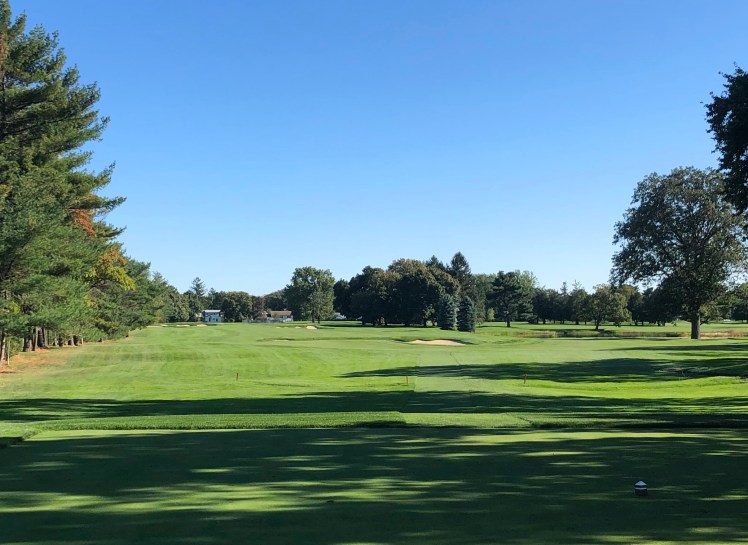
At 423 yards, the closing hole at Wannamoisett is a challenging dogleg left featuring perhaps the most difficult teeshot on the course. Ideally, you want to cut the corner here to avoid a long shot in, but a large bunker and trees require a 230 yard carry to reach the fairway. A common aiming point is towards a tall tree on the right side of the fairway that leaves about 180 yards in. Lay-ups on this hole are fairly difficult due to several fairway bunkers about 80 yards short of this green. The green itself is large and features many undulations and collection areas. A particularly brutal pin position is back-center on a plateau.
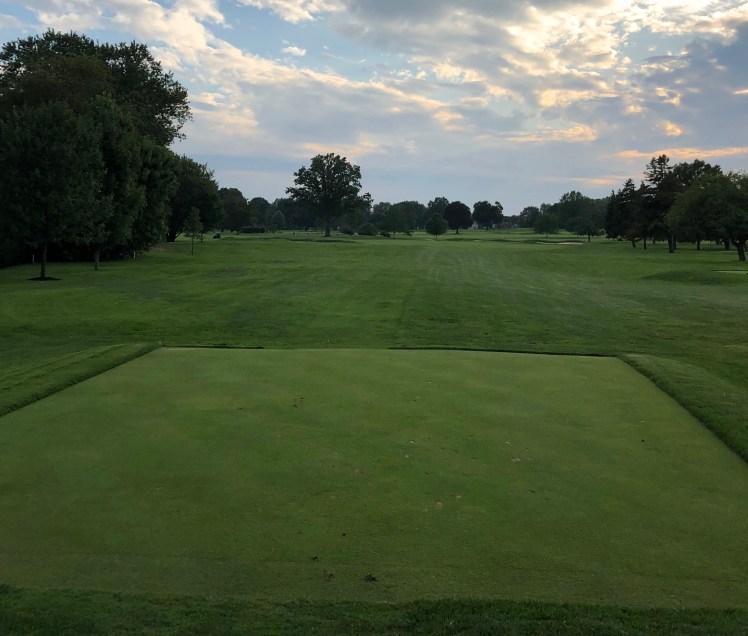
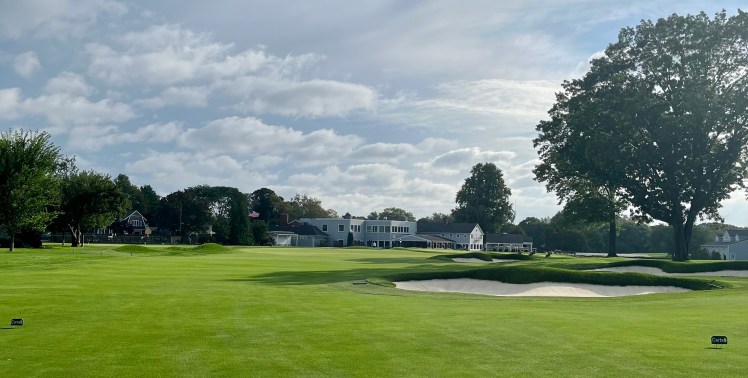
General Comments: The biggest complaint amongst members and pros alike is the fact that you can only hit short irons on the driving range. As an old course built on 100 acres, there was no original design for a range and the current one is squeezed in between the 10th and 11th holes. For those looking to hit woods, I recommend using the net in the basement. The short game facilities at Wannamoisett are strong, with an impeccably maintained huge putting green and chipping green. Pace of play at Wannamoisett is pretty variable, as rounds can range from 1:45 (my best) to 4 hours on a busy Saturday morning. New rules regarding pace of play have been enacted to keep rounds timely. While there’s a pool and tennis court, Wannamoisett is first and foremost a golf club and many of the top players in Rhode Island play out of here. Junior golf at Wannamoisett is also the best in the state with numerous successful college and amateur players originating here.
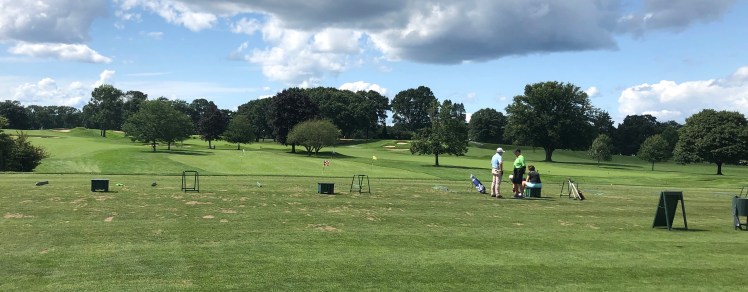
Verdict: Perhaps the finest sub-par 70 course in the world, the ever-charming Wannamoisett is undoubtedly among America’s finest parkland designs. This is the best conditioned course I’ve ever played and an architectural masterpiece considering Ross was only given 97 acres. This is the best possible layout given space constraints and you really can’t ask for much more!
23 thoughts on “Review: Wannamoisett Country Club”